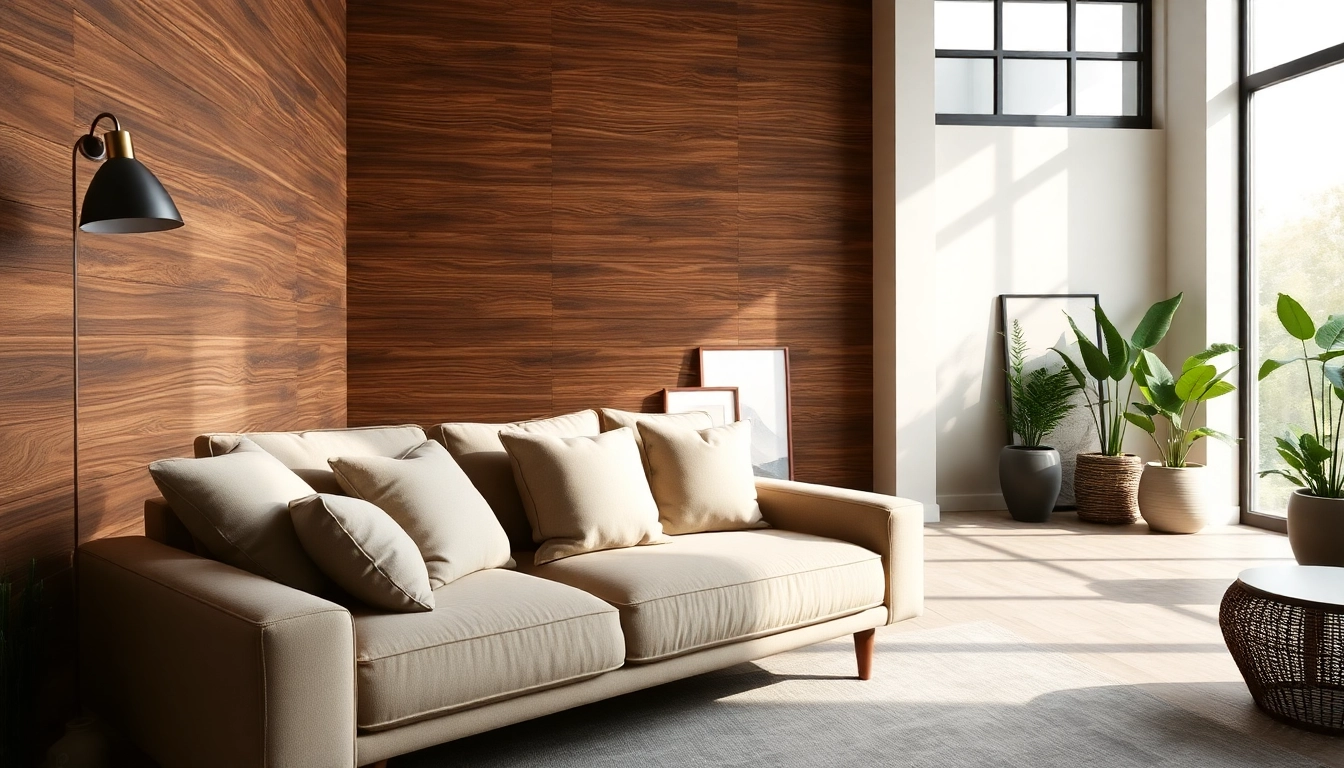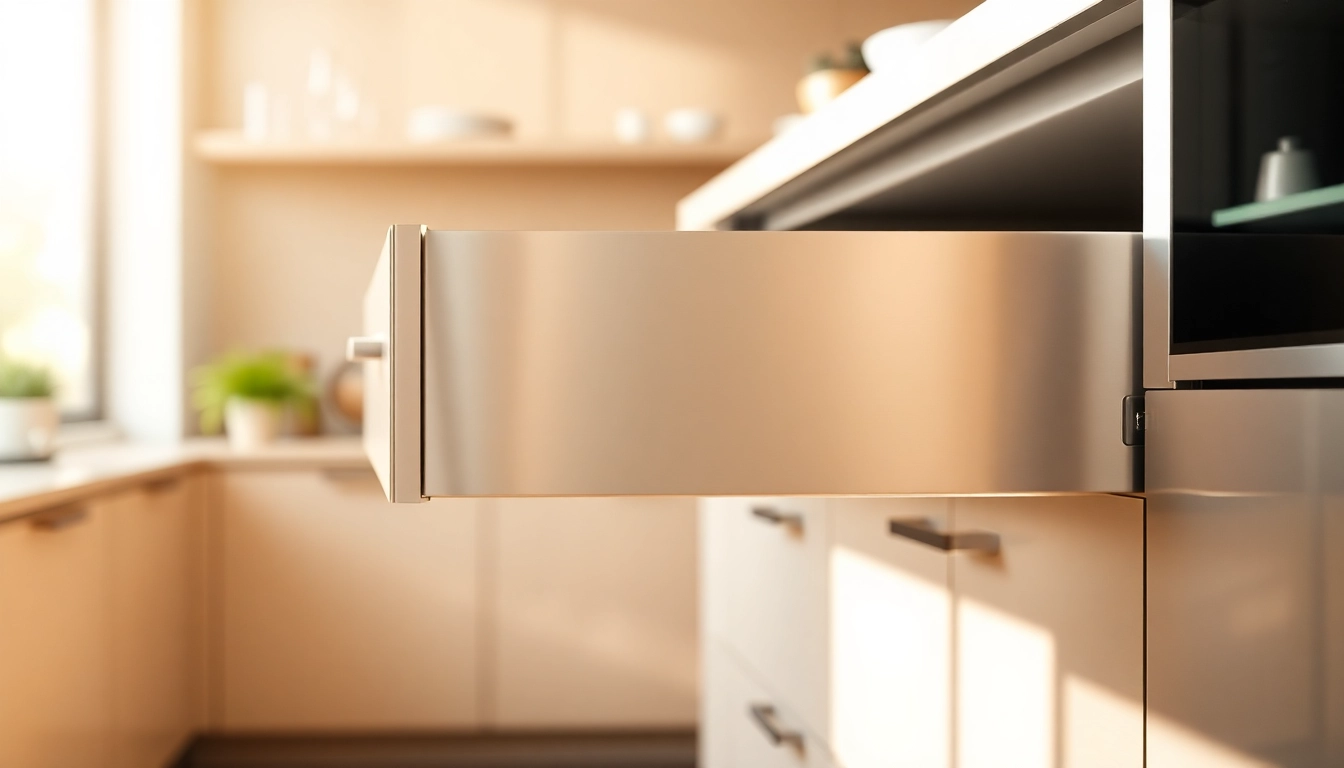Introduction to Peel & Stick Wood Wall Paneling
In the ever-evolving world of interior design, peel & stick wood wall paneling has emerged as a widely popular choice for homeowners and decorators alike. Offering a fusion of aesthetic appeal and user-friendly installation, this innovative solution allows individuals to transform their spaces without the complications associated with traditional wall covering methods. But what exactly is peel & stick wood wall paneling? This article will delve into the numerous benefits, installation processes, design ideas, and maintenance practices associated with it.
What is Peel & Stick Wood Wall Paneling?
Peel & stick wood wall paneling refers to pre-finished wood panels that come with adhesive backing, enabling easy application directly onto clean, dry surfaces. Unlike conventional wood paneling, which often necessitates nails, screws, or complex installation processes, peel & stick options simplify the experience. Users simply peel off the backing and adhere the panel to their desired wall, offering a quick and efficient way to achieve an attractive wood finish. This product is available in various styles, sizes, and finishes, ranging from rustic barnwood to contemporary sleek designs.
Benefits of Using Peel & Stick Wood Wall Paneling
The appeal of peel & stick wood wall paneling extends far beyond its straightforward installation. The following benefits illustrate why many opt for this solution:
- Ease of Installation: As mentioned earlier, installation is a breeze. This makes it a perfect option for DIY enthusiasts or those looking to cover a wall without professional help.
- Cost-Effectiveness: With no need for additional materials such as nails, screws, or adhesives, the overall project cost can be significantly lower than traditional paneling.
- Minimal Mess: The self-adhesive nature eliminates the need for messy glue or tools, making it one of the cleanest wall solutions available.
- Versatility: Peel & stick wood wall paneling can be used in various locations, from living rooms to kitchens and even bathrooms, offering design flexibility.
- Instant Transformation: In just a few hours, an entire room can take on a new character, dramatically altering the aesthetic without extensive remodeling.
- Removability: Should you wish to change your décor, these panels can be easily removed without damaging the underlying wall.
Choosing the Right Style for Your Space
Choosing the right style of peel & stick wood wall paneling can significantly influence the overall ambiance of a room. Here are some tips to guide you in selecting the perfect option based on your design goals:
- Consider Interior Theme: Whether your home features a rustic farmhouse style or a modern minimalist look, there are peel & stick options that can complement your existing decor. For a type of rustic charm, look for distressed finishes, while contemporary spaces may benefit from smoother, cleaner lines.
- Color Palette: The color of the paneling should coordinate with the room’s existing color scheme. Dark tones can create a cozy feel, while light wood can brighten up a space.
- Texture: The texture of the panel can also play a role; rough-hewn finishes can bring warmth and a sense of coziness, while sleek options promote a modern feel.
- Size of the Panels: The dimensions of the panels can affect the perception of space. Larger panels can create a bold statement, while smaller panels may be used for intricate designs or patterns.
Installation Guide for Peel & Stick Wood Wall Paneling
Necessary Tools and Materials
Before diving into the exciting project of installing peel & stick wood wall paneling, certain tools and materials can make the job smoother. Gather the following before getting started:
- Peel & stick wood wall panels
- Level
- Measuring tape
- Utility knife or scissors
- Ruler or square
- Clean cloth
- Optional: roller or squeegee for smoothing out any bubbles
Step-by-Step Installation Process
With the necessary tools at hand, follow this straightforward installation process:
- Prepare the Wall: Ensure the wall surface is clean, dry, and smooth. Remove any dust, grease, or debris. Repair any holes or imperfections as needed.
- Measure and Mark: Use a measuring tape to determine how many panels you will need. Mark the desired starting point on the wall with a pencil and a level to ensure straight lines.
- Cut the Panels as Needed: If your wall does not require full panels, use a utility knife to cut the peel & stick wood wall panels to size.
- Peel and Stick: Begin at your starting point by peeling back the adhesive backing. Align the panel with your marks and press it firmly against the wall, smoothing from the center out to eliminate air bubbles.
- Continue Installation: Repeat the process with your additional panels, ensuring they fit snugly together. Use a roller or squeegee to ensure a strong bond.
- Finishing Touches: Once all panels are installed, step back to ensure evenness. Make any necessary adjustments.
Common Mistakes to Avoid
While the installation process is relatively simple, there are common pitfalls that can be avoided with careful attention:
- Skipping Wall Preparation: Failing to properly clean and prepare the wall can lead to poor adhesion and a less polished look.
- Misalignment: Ensure the first panel is level; misalignment in the initial panel can lead to a cascading effect on subsequent panels.
- Ignoring Patterns: If your panels have a specific pattern, plan accordingly to ensure a seamless look across the wall.
- Not Allowing for Settling: Panels may shift slightly as they settle; allow for this to ensure that your installation stays aligned.
Design Ideas with Peel & Stick Wood Wall Paneling
Cohesive Room Themes
When incorporating peel & stick wood wall paneling into your space, consider how it can work within broader design themes. Consistency in design elements fosters a more harmonious appearance. Here are a few ideas:
- Farmhouse Chic: Combine with rustic furniture and vintage accents to create a cozy, farmhouse ambiance.
- Modern Minimalism: Pair with monochromatic furniture and clean lines, opting for sleek wood finishes.
- Bohemian Vibes: Layer with eclectic textiles and colorful accessories to establish a warm and inviting boho aesthetic.
Accent Walls vs. Full Wall Coverage
Deciding between creating an accent wall or covering an entire wall can be challenging. Here are the considerations for each:
- Accent Walls: A singular wall adorned with peel & stick wood paneling can serve as a stunning focal point. Ideal for living rooms or bedrooms, accent walls draw attention and create a visual experience without overwhelming the space.
- Full Wall Coverage: Opting for complete coverage dramatically transforms the entire room. This method works well in larger spaces or areas where you want a distinct ambiance, such as dining rooms or home offices.
Incorporating Lighting for Effect
Lighting plays a significant role in the overall aesthetic of wood wall paneling. When installing, consider the lighting elements in the room:
- Ambient Lighting: Soft ambient lighting will highlight the textures and colors of the wood paneling without washing it out.
- Accent Lighting: Use spotlights or wall sconces to draw attention to the paneling, creating dramatic effects and enhancing the design.
- Natural Light: If applicable, position the wood paneling to interact beautifully with natural light, showcasing its colors and grain.
Maintenance and Care for Peel & Stick Wood Wall Paneling
Cleaning Tips for Longevity
To keep your peel & stick wood wall paneling looking fresh and new, regular maintenance is key. Follow these cleaning tips:
- Dust Regularly: Use a dry microfiber cloth to remove dust and maintain the natural beauty of the wood.
- Spot Clean: For stains, use a damp cloth with mild soap. Avoid abrasive cleaners, which can damage the finish.
- Test Products: Before applying any cleaning agent, test it on a small, inconspicuous area to ensure it doesn’t harm the wood finish.
Repairing Damaged Sections
Despite the durable nature of peel & stick wood wall paneling, accidents do happen. Here are steps to repair damaged sections:
- Assess the Damage: Determine if the damage is superficial or if an entire panel needs to be replaced.
- Remove the Damaged Panel: If necessary, gently peel away the damaged panel, ensuring you don’t damage adjacent panels.
- Clean the Area: Remove any residual adhesive or debris from the wall where the panel was attached.
- Replace with a New Panel: Cut a new panel to size, peel off the backing, and firmly adhere it to the wall, smoothing out any air bubbles.
Seasonal Care Practices
Maintaining an optimal environment is crucial for the longevity of peel & stick wood wall paneling. Here are seasonal care practices to consider:
- During Humid Seasons: Excess moisture can lead to warping. Ensure good air circulation and dehumidify as necessary.
- In Cold Climates: Maintain a consistent indoor temperature to avoid contraction or expansion of the panels.
- Monitor Children and Pets: Keep an eye on playful activities that may inadvertently damage the panels.
Cost Considerations and Budgeting for Peel & Stick Wood Wall Paneling
Price Comparison with Traditional Wood Paneling
One of the key advantages of peel & stick wood wall paneling is its cost-effectiveness compared to traditional wood paneling. Here’s how they compare:
- Material Costs: Peel & stick options are often less expensive per square foot compared to solid wood or professionally installed paneling systems.
- Installation Savings: With a self-adhesive solution, you eliminate the need for costly labor, making it a perfect choice for budget-conscious homeowners.
Long-term Value and Investment
Although the initial investment in peel & stick wood wall paneling may seem low, its long-term value should also be considered:
- Diminished Remodeling Costs: The ease of removal and replacement adds to the product’s longevity, allowing you to change your design without a significant financial burden.
- Increased Property Value: Aesthetically pleasing rooms can increase the overall value of your home, making this a worthwhile investment for many homeowners.
Budget-friendly Alternatives within the Category
For those noticing budget constraints but still keen on achieving a wood paneling effect, consider the following alternatives:
- Bargain Options: Look for sales or select lower-cost brands that offer similar aesthetics without breaking the bank.
- Smaller Projects: Focus on smaller accent areas rather than complete wall coverage to conserve costs while still enjoying the benefits of wood plating.
- DIY Creativity: Repurpose wood or find salvaged material that can be transformed into peel & stick panels.



